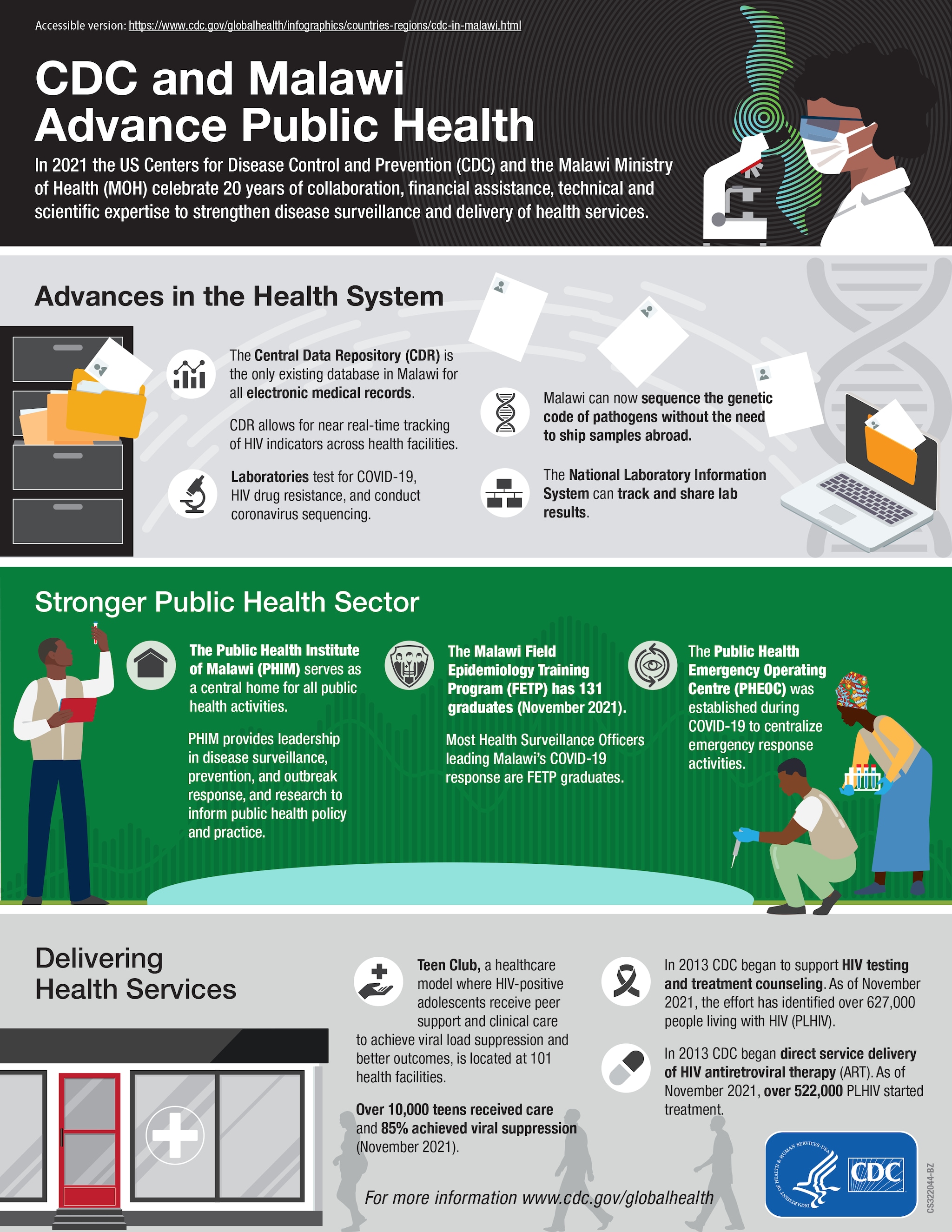CDC and Malawi Advance Public Health

Infographic Details
CDC and Malawi Advance Public Health
Visual of Malawi map and lab technician with a microscope.
In 2021 the US Centers for Disease Control and Prevention (CDC) and the Malawi Ministry of Health (MOH) celebrate 20 years of collaboration, financial assistance, technical and scientific expertise to strengthen disease surveillance and delivery of health services.
Advances in the Health System
Visual of files in a cabinet on the left. Visual of electronic files on a computer on the right.
The Central Data Repository (CDR) is the only existing database in Malawi for all electronic medical records.
CDR allows for near real-time tracking of HIV indicators across health facilities.
Laboratories test for COVID-19, HIV drug resistance, and conduct coronavirus sequencing.
Malawi can now sequence the genetic code of pathogens without the need to ship samples abroad.
The National Laboratory Information System can track and share lab results.
Stronger Public Health Sector
Visual of field epidemiologists testing outdoor water samples.
The Public Health Institute of Malawi (PHIM) serves as a central home for all public health activities.
PHIM provides leadership in disease surveillance, prevention, and outbreak response, and research to inform public health policy and practice.
The Malawi Field Epidemiology Training Program (FETP) has 131 graduates (November 2021).
Most Health Surveillance Officers leading Malawi’s COVID-19 response are FETP graduates.
The Public Health Emergency Operating Centre (PHEOC) was established during COVID-19 to centralize emergency response activities.
Delivering Health Services
Visual of three patients heading to a health clinic.
Teen Club, a healthcare model where HIV-positive adolescents receive peer support and clinical care to achieve viral load suppression and better outcomes, is located at 101 health facilities.
Over 10,000 teens received care and 85% achieved viral suppression (November 2021).
In 2013 CDC began to support HIV testing and treatment counseling. As of November 2021, the effort has identified over 627,000 people living with HIV (PLHIV).
In 2013 CDC began direct service delivery of HIV antiretroviral therapy (ART). As of November 2021, over 522,000 PLHIV started treatment.
For more information www.cdc.gov/globalhealth